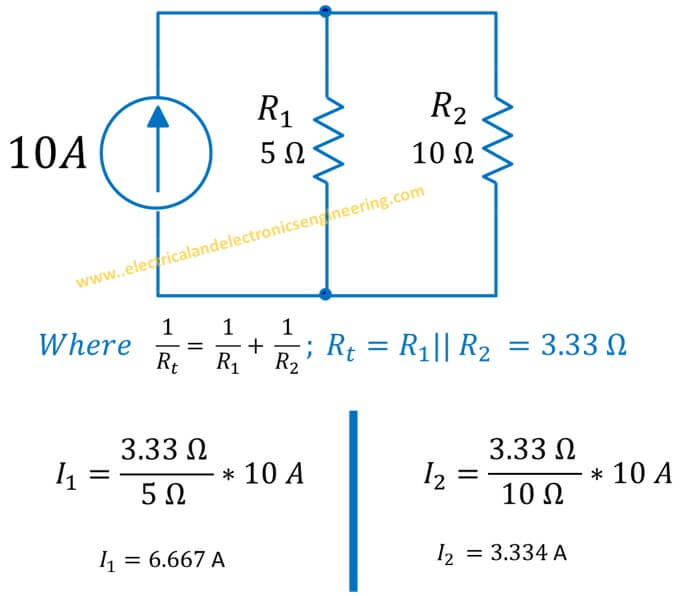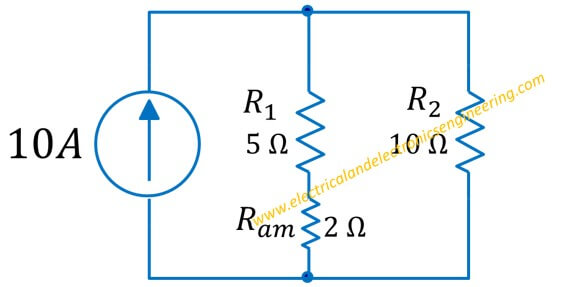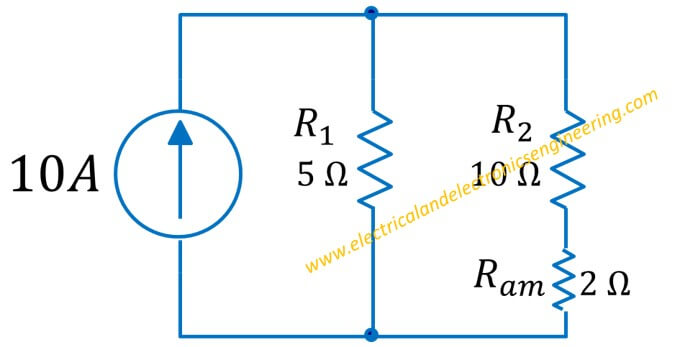Loading effect of electrical instruments is the difference between the actual value and the value that is being measured by the instrument. An ammeter is a low internal resistance instrument which connects in series to the circuit under test.
If ammeter connects in series to the instrument whose resistance is nearly or closely equal to ammeters internal resistance, then the overall resistance in the circuit will change. This deviation of current from actual value is known as the loading effect of the ammeter.
Consider a 10 A current source powering two resistors of 5 and 10 ohms. Using current divider, the current flowing across both resistors can be calculated to be 6.67 A and 3.34 A.

Let’s consider we connect an ammeter having 2 ohms internal resistors in series to the 5 ohms resistor.

Now using current divider formula:
I (1) = (4.11/7) * 10 A = 5.87 A
Similarly when ammeter connects to the other resistor:

I (2) = (3.52 / 12) * 10A = 2.93 A
Previously I(1): The actual value of current was 6.667. However the addition of ammeter to circuit decrease it to 5.87. So for this case the loading effect is:
Loading effect = (6.67 – 5.87 )/6.67 = 0.12 = 12%
Similarly, for resistance R2, the actual current was 3.34 which reduced to 2.93 when ammeter was connected.
Loading effect = (3.34 – 2.93)/3.34 = 0.12 = 12%
So that was all about loading effect of instruments.
In simple words, we can summarize it as:
The loading effect of ammeter is the decrease of current that occurs in branch due to internal resistance of ammeter.
